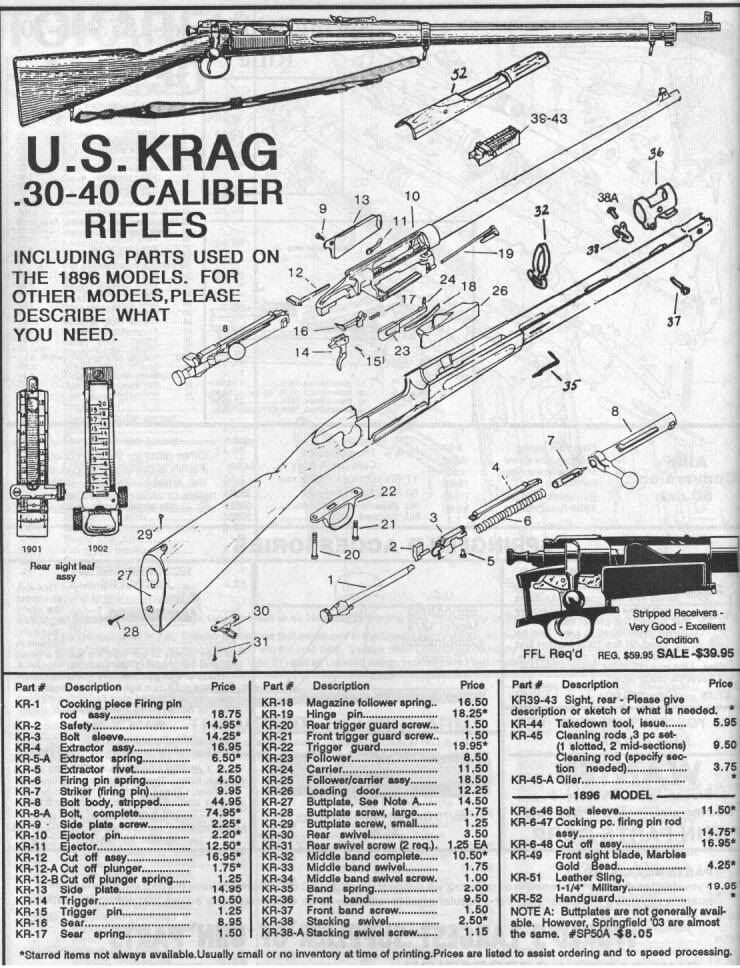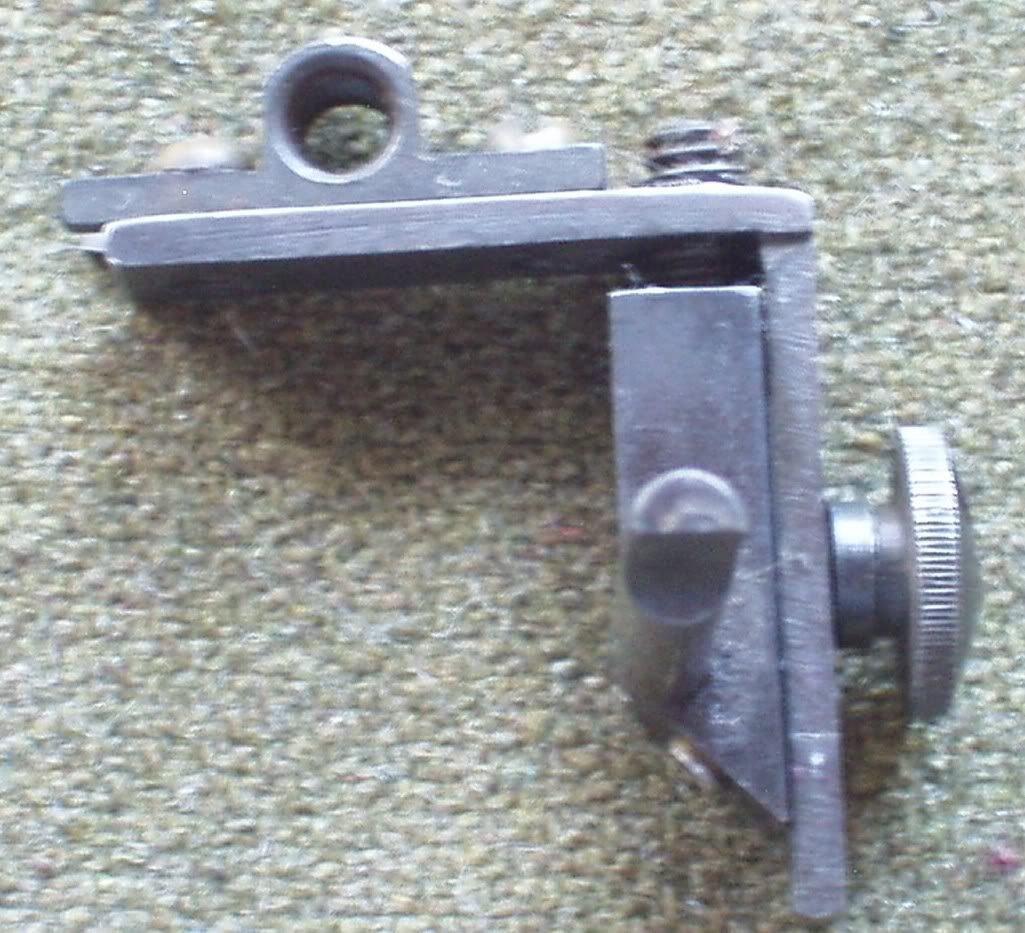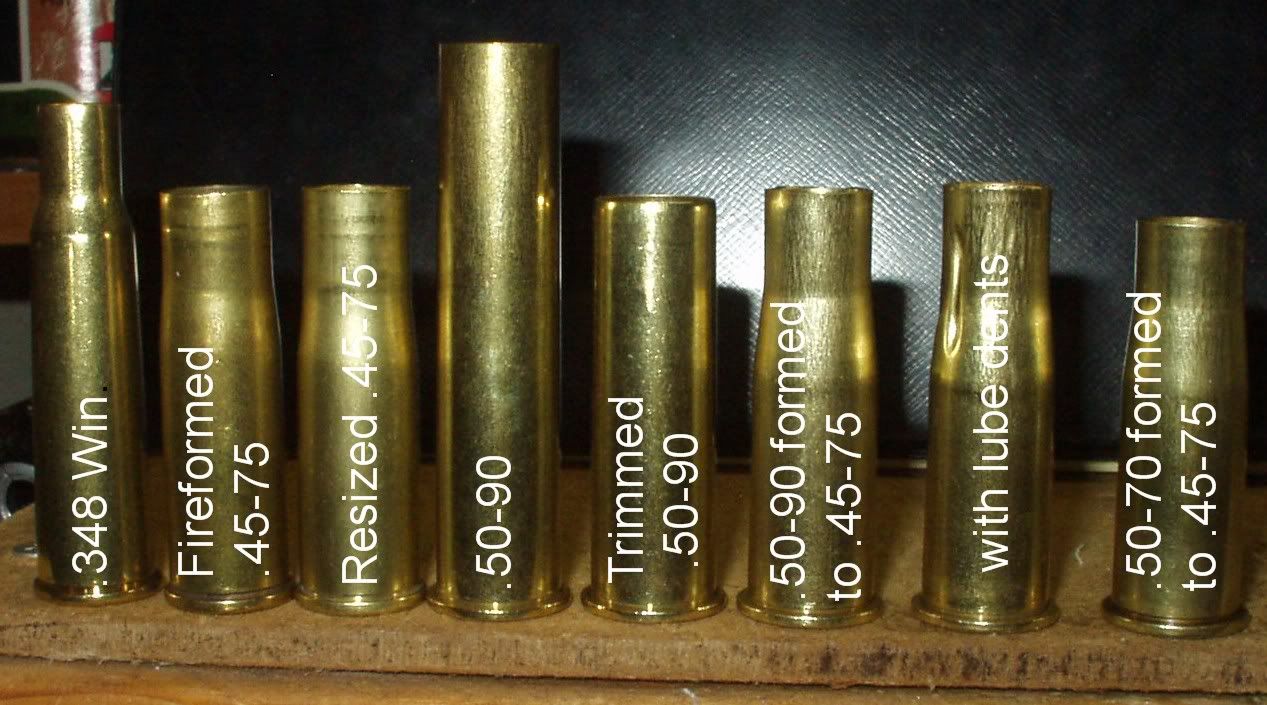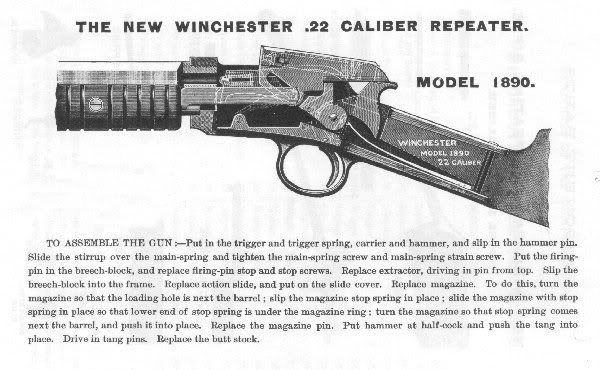 A friend gave me a Pacific Gunsight Company receiver sight for a Krag rifle to sell for him. This is a neat bit of engineering in that the mounting point is a replacement cut off plunger (#12 in the schematic) which is part of the sight mount. Of course the sight picture is not different from any other such sight but this one avoids the need for a trip to a gunsmith for drilling and tapping the receiver.
A friend gave me a Pacific Gunsight Company receiver sight for a Krag rifle to sell for him. This is a neat bit of engineering in that the mounting point is a replacement cut off plunger (#12 in the schematic) which is part of the sight mount. Of course the sight picture is not different from any other such sight but this one avoids the need for a trip to a gunsmith for drilling and tapping the receiver.Of course, this initiated a bit of research on this transitional (for the USofA) military weapon. Yes, it is transitional because it was with this weapon that the USofA first had a first-line general issue repeating rifle design. You might argue that the Winchester and Spencer leverguns of the Civil War and later, or Remington-Keene or Remington-Lee rifles were such but they were not an all service, across the board, general issue. The Krag was such a gun but it was also rather quickly superseded by the 1903 rifle.
I suppose it is unfortunate that even the Krag carbines never excited me enough to spend money on them. I could have had some good buys. The cartridge is a good one, mostly a US version of the .303 British or a rimmed .300 Savage. Sadly, the Krag is pretty much operating at the practical limits of the action. Even Uncle Sam, although he tried, couldn't up the performance of the .30 US (aka Krag) cartridge without causing a much increased rate of firearms failure as the single locking lug fractured under use of the slightly "improved", higher velocity military ammunition. While I don't hotrod the cartridge by any means, I don't have to worry with my Browning 1895.
 Back to the sight, I have to say it is difficult to find any information on the Pacific Gunsight Company on the net. You can find catalogs, some of Pacific Tool Company's reloading tools (same company?), references to a Redfield sight that mounts in exactly the same way, and a nifty no-gunsmithing peep sight for the Russian M91 Mosin-Nagant but no real history or other information.
Back to the sight, I have to say it is difficult to find any information on the Pacific Gunsight Company on the net. You can find catalogs, some of Pacific Tool Company's reloading tools (same company?), references to a Redfield sight that mounts in exactly the same way, and a nifty no-gunsmithing peep sight for the Russian M91 Mosin-Nagant but no real history or other information.I have photos of the sight and will list it with the other items on Gunbroker.com unless it sells first.
From our friend Charles G. we have the following info...
Hobie.... I have some knowledge and experience with the Pacific Krag sight in question. There apprears to have been at least two versions.
1. The earlier version elevated by backing off the thumb screw and raising and lower the slide. It was a by guess and by god kind of situation and the dickens to remove and get back in the right place. If you are going to remove the bolt of a Krag and clean from the breech, you have to remove the elevation slide.
2. The next version has a screw on the top of the elevation slide that can be used to raise and lower. There is also divot on the top of the base that holds the end of the screw. For that reason it is easy to remove and replace the elevation slide and return to zero.
I don't know when production ceased, but it was before WWII.
My first Krag came with a type 1 (above) Pacific sight that I used for a number of years.
About five years ago I replaced it with a type 2 I bought on ebay for $15.00. Two years ago I sold the older sight to a guy on the Castboolit board for $25.00 plus shiping.
I am heavy on Redfield Krag sights (sorry none for sale) so I have not followed the price of the sights for the past few years. The prices on all of the vintage sights have risen allot in recent years.
If I was selling one, I would ask $70 and take $50. If I were buying I would not go beyond $50.00. Those may not be current market prices, but that is what I would do.
I hope this helps a mite.. Charles










